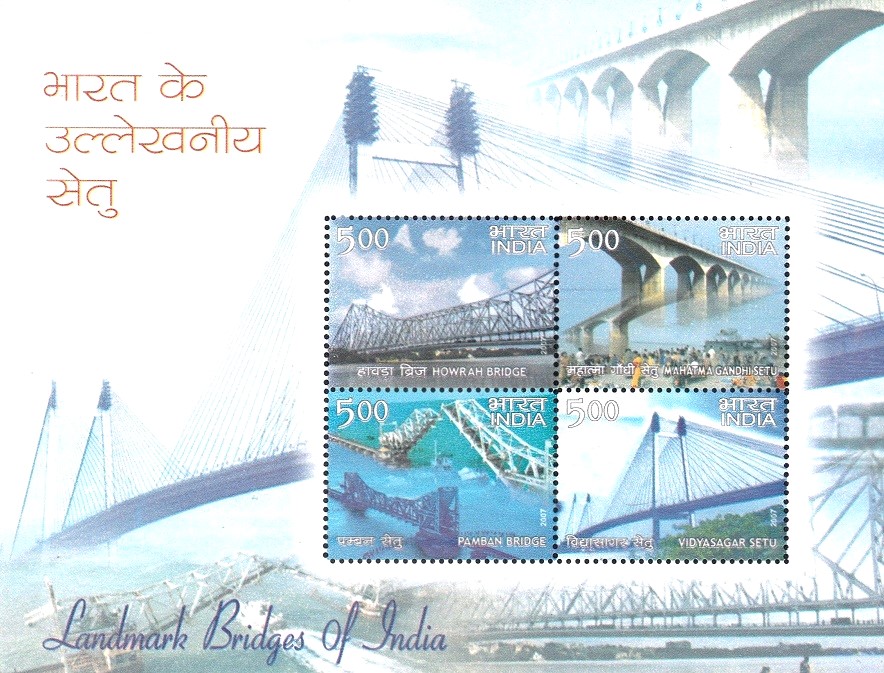
Landmark Bridges of India
A Miniature Sheet consisting of 4 nos of commemorative postage stamps on the Landmark Indian Bridges : Mahatma Gandhi Setu, Vidyasagar Setu, Howrah Bridge and Pamban Bridge :
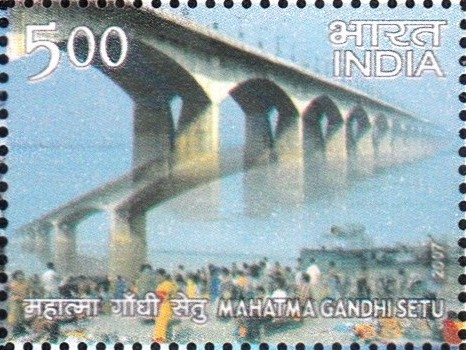
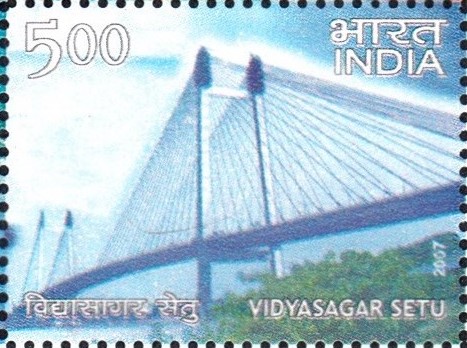

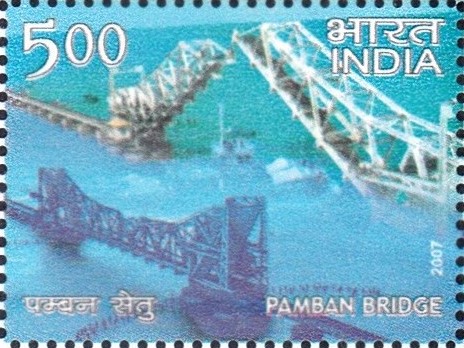
 Issued by India
Issued by India
Issued on Aug 17, 2007
Issued for : The Department of Posts is happy to issue a set of four commemorative postage stamps on the “Landmark Bridges in India”.
Credits :
Stamp & FDC : Brahm Prakash
Cancellation : Nenu Gupta
Type : Miniature Sheet, Mint Condition
Colour : Multicolour
Denomination : 500 Paise each
Stamps Printed : 0.8 Million each
Miniature Sheet : 0.4 Million
Printing Process : Photogravure
Printer : India Security Press, Nasik
About :
- When man first walked the earth he relied on himself, his own two legs and feet, for transportation. Eventually man learned to tame wild animals and used them for transportation. And finally he created machines to take him places he could not reach on his own or with the assistance of any animal. Indeed, one invention developed to expand the reach of travellers was the bridge. The earliest bridges are based on natural formations, such as fallen trees and rocks to cross over water bodies or other charms. Man-made bridges were developed to provide a safe crossing for people, originally on foot but later on horse-back, and then for mechanised transportation, to travel from one prominent place to another.
- While bridges are integral to transportation systems today, some of the bridges synthesizing designing and engineering skills stand as inspiring monuments, and some have acquired iconic and legendary status in the public psyche.
- In bringing out a set of four commemorative postage stamps on “Landmark Bridges in India”, the Department of Post has tried to showcase four such bridges in the country. The bridges featured are :–
- Mahatma Gandhi Setu :
- Mahatma Gandhi Setu, located at Patna, Bihar, is popularly known simply as Ganga Bridge. It stands at the place where Mahatma Gandhi crossed the river long back to go to Champaran, where he laid foundations of struggle that was to dislodge British, and hence the name.
- Opened to traffic on 02.03.82 by the then Prime Minister, late Smt. Indira Gandhi, this is the longest single river bridge in the world.
- The bridge consists of 45 intermediate spans of 121.065 meters each, and two end spans of 63.53 meters each, having a total length of 5,565 meters. The superstructure of the bridge is a pre-stressed cantilever construction.
- The completion of the Mahatma Gandhi Setu marks a milestone in the history of the economic development of Bihar.
- Vidyasagar Setu :
- The modern cable bridge known as Vidyasagar Setu lies across the river Hooghly. Affording a panoramic view of the skyline of Kolkata, it itself contributes to the grandeur of the city’s new skyline. Better known locally as the second Hooghly Bridge, built to provide an additional connector between the twin cities of Kolkata and Howrah. Apart from Howrah Bridge, Vidyasagar Setu is 823 meters long, and 35 meters wide. Supported on four foundations, the height of the steel pylons over pillars is 120 meters. With a 4% longitudinal gradient, the bridge provides navigational clearance of 33.87 meter to 34.38 meter over the highest level to ensure safe passage underneath, of the international cargo ships, which cater to Kolkata Port. The bridge has also been connected with flyovers and ramps on either side to provide uninterrupted flow of traffic from both, the Kolkata and Howrah ends.
- This unique and longest cable stayed bridge, constructed at a cost of Rs. 380 crores, was thrown open to the nation by the honourable Prime Minister of India on 10th October 1992.
- Howrah Bridge :
- The famous Howrah Bridge is one of the best known landmarks of Kolkata, a virtual ‘Gateway of Kolkata’, and an inseparable icon of the city, sharing a totemic relationship with its growth and evolution.
- The construction of a new ‘Suspension type balanced Cantilever Bridge’, without any intermediate pier, was conceived after the First World War, by a Committee chaired by the famous Bengali engineer and industrialist Sir R.N. Mukherjee after taking into account the hydraulic factors and the flow pattern of the river. A technological marvel, its construction was supervised by a newly formed specialised body viz. ‘The Howrah Bridge Commissioners’. Out of the 26,500 tonnes of steel used, around 3000 tonnes were imported and the rest was indigenously sourced through TISCO. The Bridge was opened to traffic in February, 1943, dismantling the earlier floating bridge. It was renamed as “Rabindra Setu” on 14th June, 1965, but continues to be referred to as Howrah Bridge in the popular lexicon.
- A suspension type balanced cantilever bridge, this is the fourth cantilever bridge in the world, with a central span of 1500 ft. between the centres of its main towers. Its anchor arms are 325 ft. long and the cantilever arms 468 ft. long at both ends, while the middle suspended span is 564 ft. The main towers soar 280 ft. high above the monoliths and are 76 ft. apart at the top. The bridge deck width is 71 ft. with two footpaths of 15 ft. on either side.
- Pamban Setu :
- Opened to traffic in 1914, the Pamban Bridge, also known as the Pamban Viaduct, forms part of the Rameswaram meter gauge section in Madurai division of the Southern Railways. Constructed over 100 to 300 feet wide reef lying submerged between the mainland of India and the Island of Rameswaram, this bridge was built over the Palk Straits to reduce the gap in the rail systems between India and Sri Lanka (then Ceylon). The distance of 36 kms between Dhanushkodi, off Rameswaram Island, and Talaimannar, the railway terminus of Sri Lanka, was linked by ferry service, and direct rail cum ferry journey tickets were issued at both ends.
- 2.06 kms long, the Pamban Bridge has 146 span of 40 feet clear, including one Scherzer lift span, which measure 213 feet, and remains a marvel of technology and a visual treat.
- Text : Based on material provided by the concerned Circles.


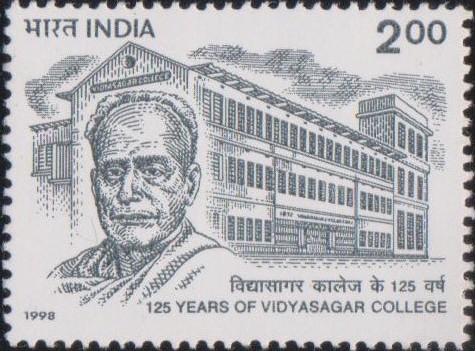

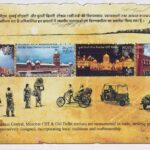
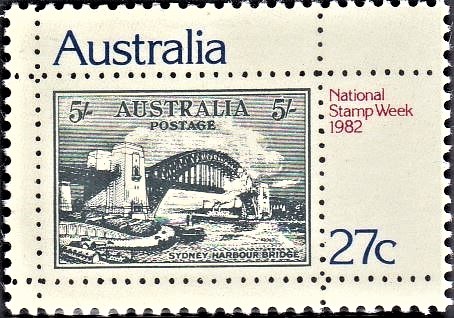
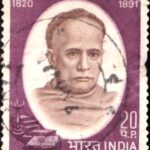
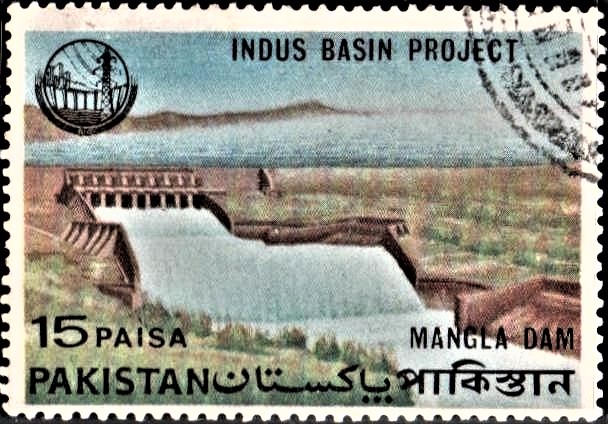
[…] carved in granite stone, indicates the excellence achieved. The other structure on the stamp is the second Hooghly River Bridge, a state-of-the-art structure in bridge technology, nearing completion at Calcutta. The bridge has […]
[…] Pilot Vessel and cranes at Calcutta Port with the crest of the Port Commissioners Calcutta. Howrah Bridge over the River Hooghly is shown in […]